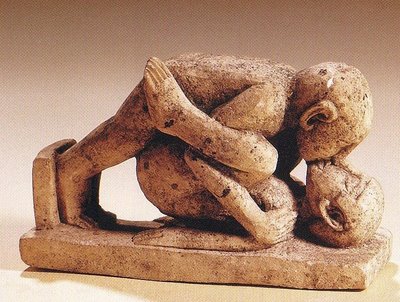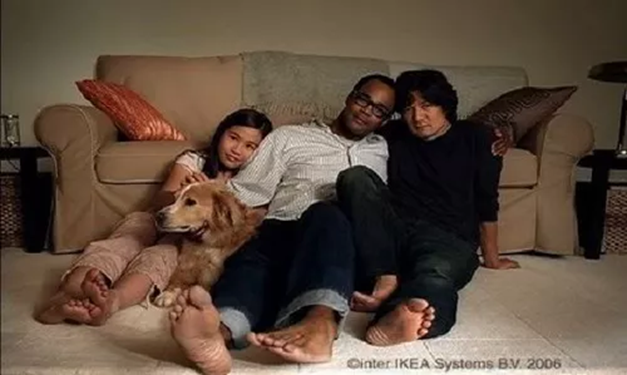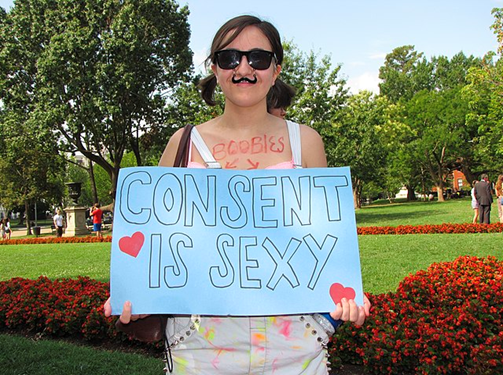Introduction
- Page ID
- 167259

Welcome to this open educational reader covering the topic of Human Sexuality. The materials in this book are a co-creation of new and existing Open Educational Resources (OERs) put together by a group of authors to give the reader an introductory overview to the study of Human Sexuality. The field of Human Sexuality is multi-disciplinary, covering a broad spectrum of perspectives. Human Sexuality can be understood as the ways in which we experience and express ourselves as sexual beings. For the purposes of this reader and course associated with it, much of what we learn will relate directly to the human condition. The reader will examine their experience with their own sexuality, and perhaps delve a little deeper into a subject that often does not get the attention it deserves, particularly when taking a holistic approach to understanding the self. Taking the time to learn about the many ways in which human sexuality is expressed and understood will also demonstrate that there is no one right way to “do” sexuality. In general, and within the lifespan, sexual expression adjusts and changes. Hopefully these readings will be enlightening and empowering. Understanding our sexual selves goes a long way towards self-fulfillment. Taking the time to learn more about one’s individual sense of pleasure, to understand the diversity of bodies and differing ways of expressing sexuality, and the ways in which culture polices sexuality is a necessary piece of higher learning and achievement of self-actualization. Additionally, understanding the broad range of sexualities may allow greater insight into the humanity of others who diverge from the reader’s perspective that they might not have previously had. The hope here is that the reader ends this course with a greater knowledge of that aspect of their humanity and recognizes and respects the large variety of ways in which humans express their sexuality.

A sex positive approach informs this reader. We use the term sex positive in this reader to imply an open and progressive approach to sexuality without judgement. For the good of the people, this is a space to embody and explore sexuality and discover our desires because it is important for us to feel good. There is entirely too much cultural shame around our bodies and sexuality that predominantly is based in misinformation or myth. We hope this reader will help you develop your sexual literacy both personally in terms of what fulfills you, and through deeper understanding of the vast diversity present in human sexuality. As one continues through this book, please make note of how those myths have informed an understanding of sexuality and critically evaluate how that has affected an approach to sexuality.
This book will be centered around two main themes. The first will be a focus on the importance of open honest communication. Communication with ourselves, as we embark on understanding our knowledge of the world of human sexuality, our bodies, and what we like and don’t like. Additionally we will stress the importance of honest open communication with those who we interact with regarding our sexuality. The only way to really know if another person wants to enter into a sexual encounter is to talk about it and make sure the feeling is mutual. As Salt-N-Pepa so eloquently put it way back in 1991, let’s talk about sex baby! Salt-N-Pepa - Let's Talk About Sex
Talking freely and openly takes practice, and not everyone has been conditioned to talk about sex with intimate partners, family or really, anyone. But taking the step to add open communication to one’s sexual life goes a long way in terms of overall wellness and isn’t that what it’s all about?

The second theme connects to the first theme of being open and honest with ourselves and others by way of an authentic acceptance of ourselves via embodiment and radical self-love. An objective of these course materials is for the reader to finish this semester with a deeper understanding of their body, how it feels and how amazing it is. We spend entirely too much time critiquing when we ought to be celebrating. Please commit to practicing radical self-love this semester. The human body is a wonderland in all of its iterations, no two bodies look alike, and it is about time to start reveling in its gorgeousness! So please be on the lookout for opportunities throughout this semester both in class and in life beyond the classroom, to develop your sexual literacy and practice both honest communication and radical self-love, whether related to human sexuality or in any other aspect of life. Because just imagine what the world would look like if everyone walked around telling people the truth (in a kind way), and truly loving themselves wholly and completely.
This reader is in no way meant to be the totality of the world of human sexuality. It is merely a sampling of readings based on selected topics within the study of human sexuality. Because OERs are free and open to adaptation, this material is available to anyone wishing to teach or learn this content. The flexibility of OER also means others may pick and choose from this reader to create their own collection. This document is not static, it will change from year to year based on changing times and the vastly growing repositories of Open Educational Materials. A debt of gratitude is owed to the OER movement, and the authors are excited to be a part of it through this and other projects.
Whenever possible, the authors try to avoid the false binary trap–the assumption that there are only two possibilities when it comes to human bodies or genders. There are specific bodies that perform different functions and human sexuality is often concerned with these functions. Human Sexuality, biology and identity however, are more complicated than that, and whenever possible the authors seek to not fall back into a false binary or generalize based on themes like “what women want” or “how to be a man.” That being said, there will be instances where we discuss things through binary lenses. It is our hope that we do this as accurately and in as non-stereotypical a way as possible. If we reference any classic works just as examples the likes of Our Bodies Ourselves, or The Vagina Monologues, we will be exploring them in context and so re-imagining language may not always take place. When we discuss issues like pregnancy or abortion, we are referring to bodies that can be impregnated so we will need to discuss them in those terms. When we use work that could be served from some non-binary language updates, and articulate this point, we are not suggesting the intent of the content is not valid, only that we see a way forward that can both provide the valuable information in a way that does not reinforce stereotypes of the gender binary or feel offensive to anyone.
Thank you and welcome to Sexuality, the Self and Society.
Susan Rahman, PhD.
Ready to develop your sexual literacy? Before we begin the course, there is one small assignment I need all of you to undertake. Please get yourself a small mirror and a quiet private place. You have one of three options to choose from.
Option 1: Please use the mirror to inspect your sex organs-however you define them. This may feel strange at first, as we do not spend a great deal of time looking at those parts of our bodies. Do not rush, take some time to look at the structure. Do you know what all the parts are? Pay attention to how this process feels to you.
Option 2: Using your largest sex organ, your brain (yes it is!), think about what you love about yourself. Look in the mirror and tell yourself what it is. Could be one thing directly related to your sexuality, could be a long list and maybe some of the things have to do with sexuality maybe they don’t.
Option 3: Do both of these :)
Write 2-3 sentences about how it was doing this. You will not be turning this in. It is for you and only you to share with as you wish.


